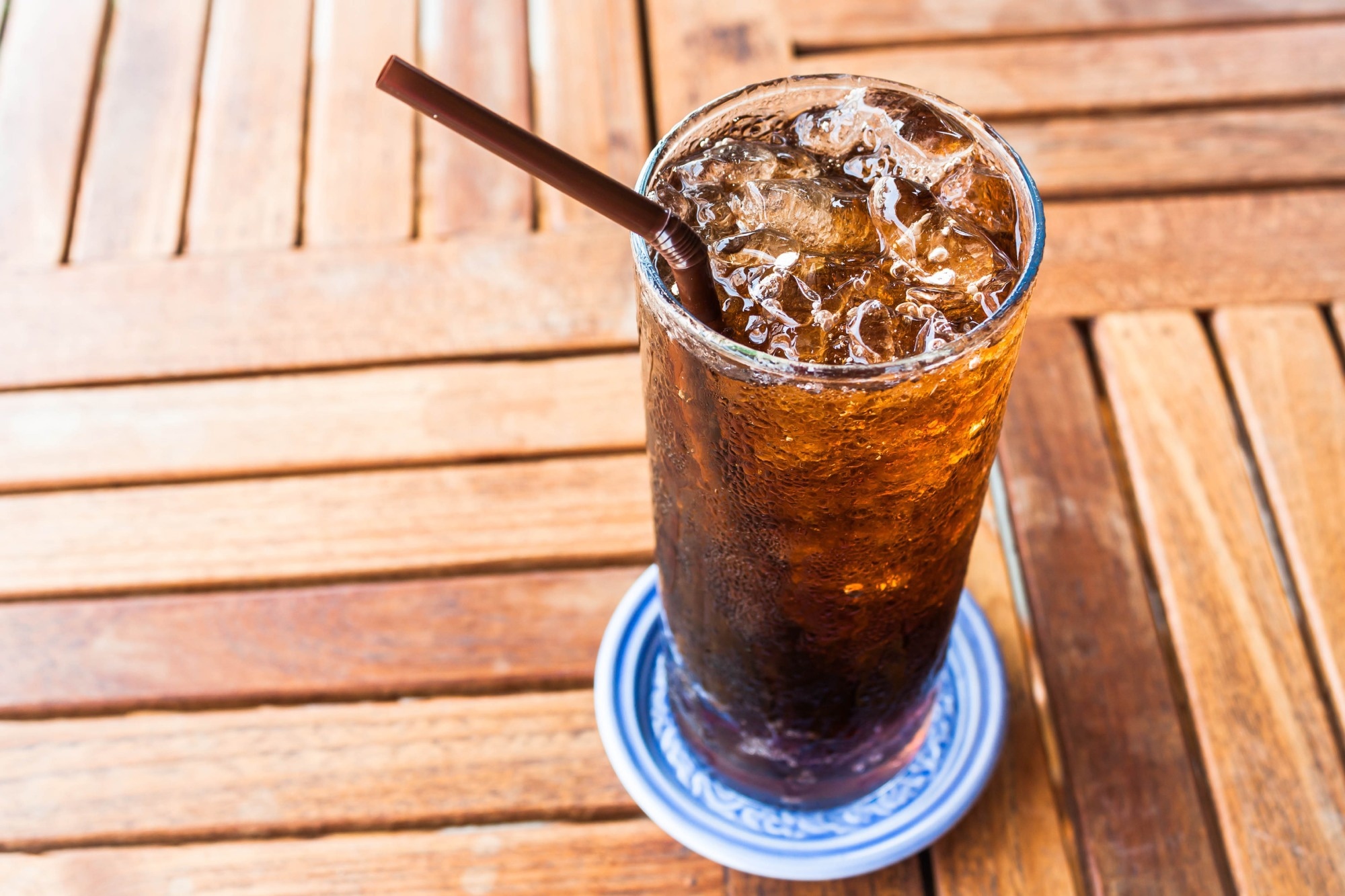In a recent article published in BMC Public Health, researchers explore the association between diet soft drink intake and metabolic dysfunction-associated steatotic liver disease (MASLD) using National Health and Nutrition Examination Surveys (NHANES) data.
 Study: Association between diet soft drink consumption and metabolic dysfunction-associated steatotic liver disease: findings from the NHANES. Image Credit: punsayaporn/Shutterstock.com
Study: Association between diet soft drink consumption and metabolic dysfunction-associated steatotic liver disease: findings from the NHANES. Image Credit: punsayaporn/Shutterstock.com
Background
MASLD is one of the most common chronic liver diseases whose incidence rate is increasing at an alarming rate globally. Currently, diet control and physical exercise are the only two modes for prevention and treatment of MASLD in the absence of its drug treatment.
They act by reducing body fat, which alleviates or reverses liver steatosis. Similarly, there could be diets that increase the risk of MASLD.
Diet soft drinks that market themselves as “zero calories” contain artificial sweeteners such as aspartame. Studies have shown that adolescents' consumption increases body mass index (BMI).
So, contrary to the general belief that diet soft drinks prevent weight gain, they lead to obesity upon excessive consumption. The World Health Organization (WHO) classified aspartame as carcinogenic to humans in July 2023.
Preclinical studies have also shown that artificial sweeteners can promote insulin resistance (IR) and induce glucose intolerance by modulating gut microbiota, two phenomena related to MASLD pathogenesis.
Furthermore, obesity is the root cause of several metabolic disorders, such as type 2 diabetes (T2D), and even increases the risk of high blood pressure in adolescents. However, studies have not explored the association of diet soft drink intake with MASLD.
About the study
In the present study, researchers used detailed records of diet and soft drink intake of 2,378 participants of the 2003–2006 NHANES, a National Center for Health Statistics (NCHS) sponsored survey program assessing the general health and nutritional levels of the general American population, for the assessment of MASLD status based on their Fatty Liver Index (FLI).
The final study cohort comprised 1,089 individuals with MASLD, i.e., having FLI ≥60, and 1,289 with no MASLD.
Next, they determined participants' diet soft drink intake frequency based on their responses to questions like, ‘How often do you drink diet soft drinks?’.
Then, they redefined their consumption responses for ease of analysis and interpretation to "Never," "Rarely," "Sometimes," and "Always". The study covariates were age, sex, race/ethnicity, education and smoking status, physical activity levels, and dietary factors.
The researchers used three weighted multiple logistic regression models to evaluate the relationship between diet soft drink intake and the presence or absence of MASLD (a binary outcome) and one or more predictor variables (in this case, diet soft drink intake) expressing results as odds ratios (OR) and 95% confidence intervals (CI).
Furthermore, they conducted a mediation analysis to assess whether BMI partly or completely explained this relationship. They calculated the proportion of the mediated effect as the ratio of the mediated (indirect) to the total (direct) effect, multiplied by 100% to show the extent to which BMI mediated the relationship between diet soft drink intake and MASLD.
Results
Of 2,378 individuals meeting the inclusion criteria of this study, males accounted for a higher proportion than females in the MASLD group, and both groups also had significantly different ages and BMI.
The frequency of diet soft drink intake was higher in the MASLD group than the non-MASLD group, with the most significant association observed between the "always" frequency of diet soft drink intake and MASLD.
The results also highlighted that compared to the non-MASLD population, the MASLD population had significantly higher BMI despite no statistical difference in energy intake.
The researchers noted OR of 2.04, with a 95% CI and a p-value < 0.001 in Model 1, and ORs of 2.12 and 1.98, with a 95% CI and a p-value < 0.001 and 0.003, respectively, in Models 2 and 3.
Moreover, in all three regression models, the association between frequent diet soft drink consumption and MASLD incidence remained significant even after adjusting for demography, lifestyle, and metabolic syndrome variables.
Subgroup analysis revealed a significant interaction between diet soft drink intake and T2D for MASLD incidence.
Furthermore, BMI mediated 84.7% of the association between diet soft drink intake and non-alcoholic fatty liver disease (MASLD). However, whether diet soft drink intake leads to weight gain remains to be determined.
Conclusions
Based on the analysis of nationally representative data, this study estimated a slightly higher (43.64%) weighted prevalence rate of MASLD than prior epidemiological studies, which demonstrated that excessive diet soft drink intake was associated with MASLD, where BMI plays a mediating role in this association.
This data could provide valuable dietary recommendations for MASLD prevention and treatment.